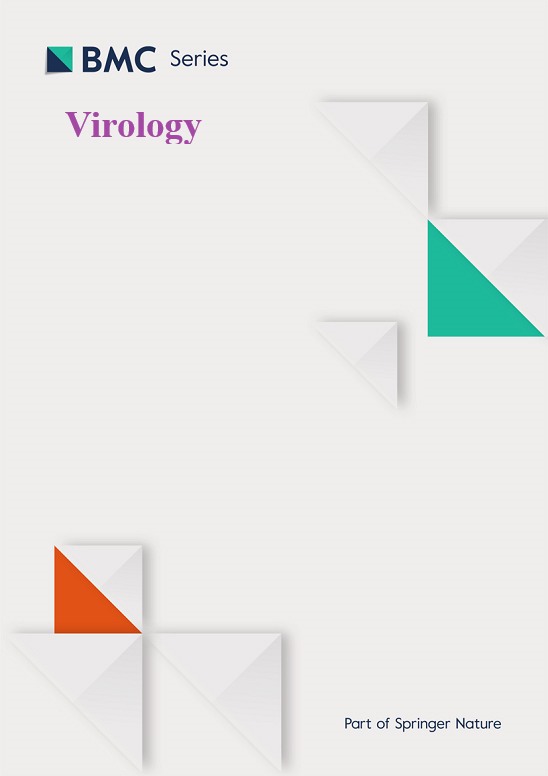LEF3磷酸化通过抑制家蚕核多角体病毒与碱性核酸酶的相互作用而减弱其复制。
IF 2.8
3区 医学
Q3 VIROLOGY
引用次数: 0
摘要
晚期表达因子3 (Late expression factor 3, LEF3)是杆状病毒编码的一种多功能单链DNA结合蛋白,在病毒DNA复制中不可或缺,在病毒感染中起着关键作用。我们之前的磷酸化组学定量分析显示,家蚕核多角体病毒(BmNPV)感染后,位于LEF3核定位序列的两个丝氨酸残基(S8和S25)的磷酸化水平显著上调,但其潜在机制尚不清楚。为了研究磷酸化对BmNPV感染的影响,研究人员对LEF3进行了位点直接诱变,获得磷酸化的模拟(S/D)或去磷酸化的模拟(S/A)突变体。结果表明,S8或S25的磷酸化抑制了病毒的复制和增殖。此外,我们发现n端125个氨基酸区负责与病毒编码的碱性核酸酶相互作用,但这种相互作用可以被磷酸化抑制。我们的研究结果表明,磷酸化可能作为宿主的抗病毒策略。本文章由计算机程序翻译,如有差异,请以英文原文为准。

LEF3 phosphorylation attenuates the replication of Bombyx mori nucleopolyhedrovirus by suppressing its interaction with alkaline nuclease
Late expression factor 3 (LEF3), a multifunctional single-stranded DNA binding protein encoded by baculoviruses, is indispensable for viral DNA replication and plays a pivotal role in viral infection. Our previous quantitative analysis of phosphorylomics revealed that the phosphorylation levels of two serine residues (S8 and S25) located in LEF3 nuclear localization sequence were significantly up-regulated after Bombyx mori nucleopolyhedrovirus (BmNPV) infection, but the underlying mechanism remained unknown. To investigate the impact of phosphorylation on BmNPV infection, site-direct mutagenesis was performed on LEF3 to obtain phosphorylated mimic (S/D) or dephosphorylated mimic (S/A) mutants. The results demonstrated that the viral replication and proliferation were inhibited by phosphorylation of S8 or S25. Furthermore, we found that the N-terminal 125 amino acids region was responsible for interacting with virus-encoded alkaline nuclease, but this interaction could be suppressed by the phosphorylation. Our findings indicated that phosphorylation may serve as an antiviral strategy for host.
求助全文
通过发布文献求助,成功后即可免费获取论文全文。
去求助
来源期刊

Virology
医学-病毒学
CiteScore
6.00
自引率
0.00%
发文量
157
审稿时长
50 days
期刊介绍:
Launched in 1955, Virology is a broad and inclusive journal that welcomes submissions on all aspects of virology including plant, animal, microbial and human viruses. The journal publishes basic research as well as pre-clinical and clinical studies of vaccines, anti-viral drugs and their development, anti-viral therapies, and computational studies of virus infections. Any submission that is of broad interest to the community of virologists/vaccinologists and reporting scientifically accurate and valuable research will be considered for publication, including negative findings and multidisciplinary work.Virology is open to reviews, research manuscripts, short communication, registered reports as well as follow-up manuscripts.
 求助内容:
求助内容: 应助结果提醒方式:
应助结果提醒方式:


